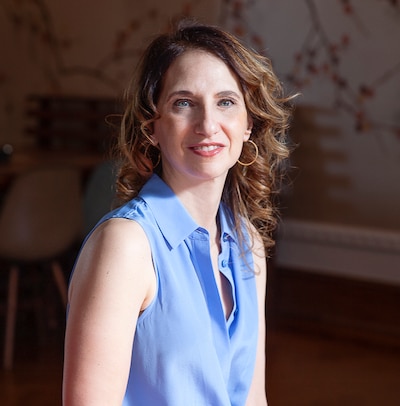Middle school is the last place most of us want to return, but I voluntarily went back last month.
My niece was struggling mightily with seventh grade. Her parents asked if I, a former teacher and an educational consultant, could help her tackle Zoom School. So I converted my kitchen table into a classroom and spent eight hours each day attending online classes with her and coaching her through homework.
I was getting an inside view, not only of my niece’s development, but of online learning at one of the most highly sought-after public middle schools in Brooklyn.
What I saw was alarming.
Middle school is the time for children to build a foundation for success in high school and beyond. It’s the time to hone the executive functioning skills essential to organizing their writing, their reasoning, and their backpacks. But in Zoom school, my niece did not have a single notebook. All of her work was done on a laptop she had borrowed from her mother. (At least she had a device and a keyboard — plenty of other kids were on phones or iPads, or absent.) Yet my niece, like many others, had always used pencils and paper in school. She had not yet learned to type.

In many classes, the only way for students to participate was by putting answers into a chat box. My niece struggled to type fast enough to join conversations. Her inability to keep up led her to provide one-word responses or simply stop participating.
We know how difficult it is to conduct an engaging and productive online meeting. Unfortunately, the forays into group conversation I saw with middle schoolers alternated between dead air and chaos. After some mass confusion at the start of one class, a teacher spent the rest of the period checking students’ screens to make sure that they were on the right page while the rest of the class zoned out.
Teachers who had been cautioned that the children might be emotionally fragile, embarrassed about their surroundings, or lacking privacy — all significant concerns — repeated reminders that no one should feel pressure to appear on camera. But with no useful alternatives for meaningful interaction, children drifted off. The teachers’ usual techniques to engage kids by reading faces and body language were nearly impossible to deploy online.
It seems that the teachers had been given very little training in how to transfer instruction to a virtual setting, particularly for kids with learning disabilities. As a result, students in my niece’s middle school were essentially expected to teach themselves the material. Commercially available videos filled our days in a monotony of disengagement. Math and science were taught through multiple choice formats and matching games. Students in Spanish class watched a video of a disembodied voice counting to 20, and then were supplied with a worksheet to teach themselves to tell time.
Instead of incorporating active engagement with individual students, classes were designated as “work periods” where teachers were off camera but present “in case you have a question.” My niece’s learning disabilities entitle her to extra support, but she got none online. She had become completely and utterly lost.
After weeks of one-on-one help, my niece is beginning to flourish. I worked with her to deepen her thinking and stretch her vocabulary. I typed for her when hunting and pecking became overwhelming. She beamed when she saw how her writing could capture the ideas in her head.
All students deserve this kind of support. And while fixing this school year may not be realistic, vaccines are here, and September is coming. We cannot send our children back to school next fall and resume business as usual.
We need a big, brave federal plan aimed at helping students recover all that they have lost. My experience has underscored that there can be no solution that does not include one-on-one attention for children.
That’s a costly proposition. A recent Brown University report touted the importance of such individualized attention — what educators call work “at the elbow” — and estimated the cost of a national tutoring program at $50 billion. But the cost of not doing it, and leaving a generation of children to struggle from behind, is so much higher.
It is clear that the pandemic has severely exacerbated existing education gaps and created new ones. We need to do everything we can to ensure that all kids get the critical support they need.
Elana Sigall is an attorney who served as the head of special education policy for New York City and is a former deputy secretary of education for the governor of New York. She has taught courses on law and education at Columbia Law School and Teachers College and currently consults with organizations and individuals on a range of educational issues.



